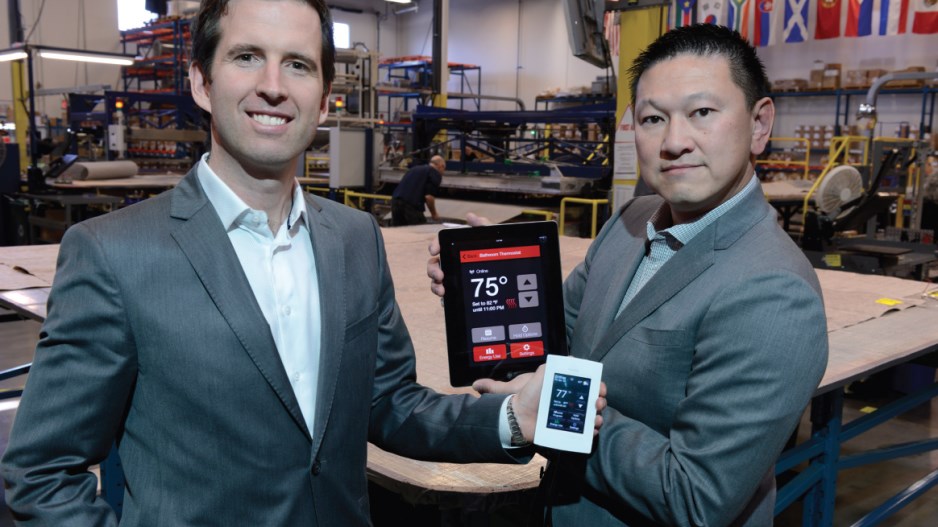You know you’re living in an ultra-connected world when you have the ability to remotely control the heating in your bathroom floor through a satellite link. And you begin to realize the global potential of machine-to-machine (M2M) technology when a Vancouver controller can track stolen electricity in Brazil or any other country in the world.
M2M refers to the connectivity of both wireless and wired systems through cloud, cellular and Wi-Fi networks that can link virtually any electronic machines on the planet.
Richmond-based tech giant Sierra Wireless (TSX:SW) has moved boldly into the M2M environment and is considered a global leader in the field. In March, Sierra closed a deal to acquire Vancouver’s In Motion Technology Inc. for $21 million. In Motion has developed technology that turns moving vehicles, typically first responders such as ambulances, police cars and fire engines, into cellular hot spots. During 2013, In Motion generated US$15 million in revenue, and its gross margin was a startling 50% of revenue.
Sierra Wireless has been refocusing its business to concentrate solely on the M2M space. It now has its wireless devices on more than 80 networks globally and has shipped more than 50 million M2M devices worldwide. “We are experiencing unprecedented growth in the market for mobile enterprise solutions,” said In Motion CEO Dean Rockwell.
It is estimated that 187 million M2M connections are now in place worldwide, but the growth is so rapid, and the applications so plentiful, that the number will accelerate before you finish this article. M2M is expected to become a $2 trillion industry within six years, when there will be 12.5 billion M2M devices globally, according to U.K.-based Machina Research.
For Kevin McElroy, president of Richmond-based Nuheat, M2M is simply a smart way to provide better service to thousands of clients.
The 20-year-old, B.C.-born company sells its electric radiant heating systems across Canada and in every U.S. state. Earlier this year it rolled out Nuheat Signature, a $265 Wi-Fi-enabled thermostat that allows clients remote access to all settings through a smartphone app or a web browser. Homeowners, for example, can change the temperature or monitor energy use in their homes from anywhere.
McElroy said there are also commercial applications.
A hotel, for example, can reset the radiant floor heating in any of its suite bathrooms whenever guests depart, he explained.
“We think Signature is big,” McElroy said.
Signature can replace complicated manual thermostats and saves energy through precise heat control in a myriad of rooms, he said.
“We went on vacation recently, and I had to go to each room in the house to turn off the radiant heating. With Signature I could have done it all on the way to the airport.”
Vancouver-based startup Awesense is also focused on using M2M to save energy, but on a massive scale. Founded in 2009 and a product of the venture acceleration program at Wavefront, Awesense has developed a wireless mobile sensor that clamps to power lines to track technical losses, theft or waste on even extensive electrical grids.
Awesense monitors can be set up quickly and can pinpoint areas of power loss within days, sometimes hours, compared with weeks or months with traditional methods, said Awesense CEO Mischa Steiner-Jovic.
He added that the technology guarantees no power disruption to the customer, and a wireless sensor eliminates the need for bucket trucks and on-site labour. Awesense’s latest system, called True Grid Insight, allows near-immediate analysis of multiple stations across wide-flung grids, with all of the information stored in the cloud and available from anywhere at any time.
Awesense has landed contracts with major power companies in Canada, the U.S., Europe and Central and South America and sees enormous potential for continued growth. It is estimated that global theft of electrical energy costs $85 billion annually, and aging electrical networks waste billions more.
“Leading customers have been able to reduce theft by over 50% in the last few years while using our system,” Steiner-Jovic said, adding that many clients have also discovered data errors and inefficiencies that, once corrected, improved grid performance.




